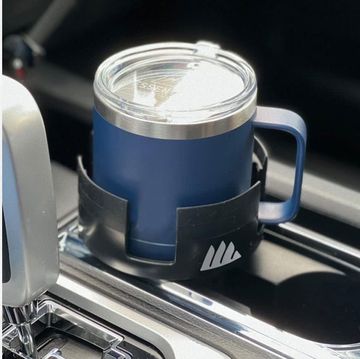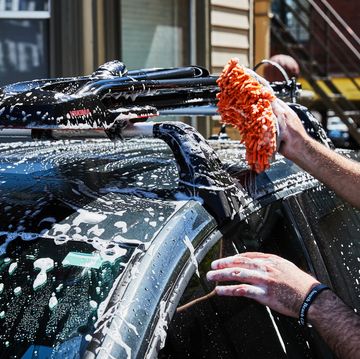(Photo by illuminea/Flickr)
One of the more dispiriting facts of consumer life is that panaceas don't routinely live up to their promises. Sure, sometimes you get penicillin, a product that needs no introduction, but other times you get Dr. Ebeneezer Sibley's Reanimating Solar Tincture, an elixir alleged to restore life in the event of sudden death.
And then there's WD-40, a putative fix-all that boasts uses ranging from driving moisture from a flooded motor to killing roaches to breaking in baseball gloves to reviving drowned cellphones. Such is its pop-cultural ubiquity that it even co-stars in a well-known handyman apothegm: "If it moves and it shouldn't, you need duct tape. If it doesn't move and it should, you need WD-40."
But is WD-40 really toolbox penicillin? Or is it the snake oil of lubricants?
To find out, we culled various products recommended for use in five common DIY jobs and pitted them against WD-40.
1. Loosening a Rusted Nut or Bolt
Breaking the corrosion on a recalcitrant nut is an ego-rattling job (for step-by-step directions, click here) that requires not a lubricant but a penetrating fluid—a very low-viscosity oil. There are a lot of good products to choose from—Kano Kroil, Liquid Wrench, CRC Freeze-Off, BG In-Force—but Bob Cornwell, ASE manager of Medium and Heavy Vehicle Test Development, and a guy who knows oil like Inuits know snow, recommends PB Blaster over everything else, including WD-40.
PB Blaster is mostly naphtha and petroleum oil and has a preternatural ability to insinuate its way into minuscule spaces. For best results, apply once with care, wait 10 minutes, then apply and wait again before attempting removal.
And if you don't mind a little mixology, try concocting a homemade cocktail of automatic transmission fluid combined 1:1 with acetone, which can be as much as four times—repeat, four times—as effective as any other product.
THE WORLD: 1
WD-40: 0
2. Freeing Up Rusted Compression Rings
The "wd" in WD-40 stands for "water dispersal." Reducing moisture in an engine cylinder can certainly help reduce friction and free up compression rings rusted and frozen to the cylinder walls. But a better product for reanimating a stubbornly seized engine is Marvel Mystery Oil, a mixture of naphthenic hydrocarbons and mineral oil. Invented by Burt Pierce after World War I to treat ailing carburetors, it got its name from its founder, who would respond to questions about its composition by saying, coyly, "It's a mystery!"
Jacques Gordon, contributing editor at Motor Age, says you just need to remove the spark plugs, squirt some Marvel Mystery Oil directly into the cylinder, leave it overnight, and then try to start it the next morning.
Gordon notes that it also has other beneficial qualities: His high-mileage 1952 Packard with noisy lifters was in such disrepair that it wasn't worth rebuilding, so he just put a pint of Marvel Mystery Oil in the gas tank and one in the crank case. The car was instantly quieter, smoother and more powerful. He drove it like that for another year.
THE WORLD: 1
WD-40: 0
>













